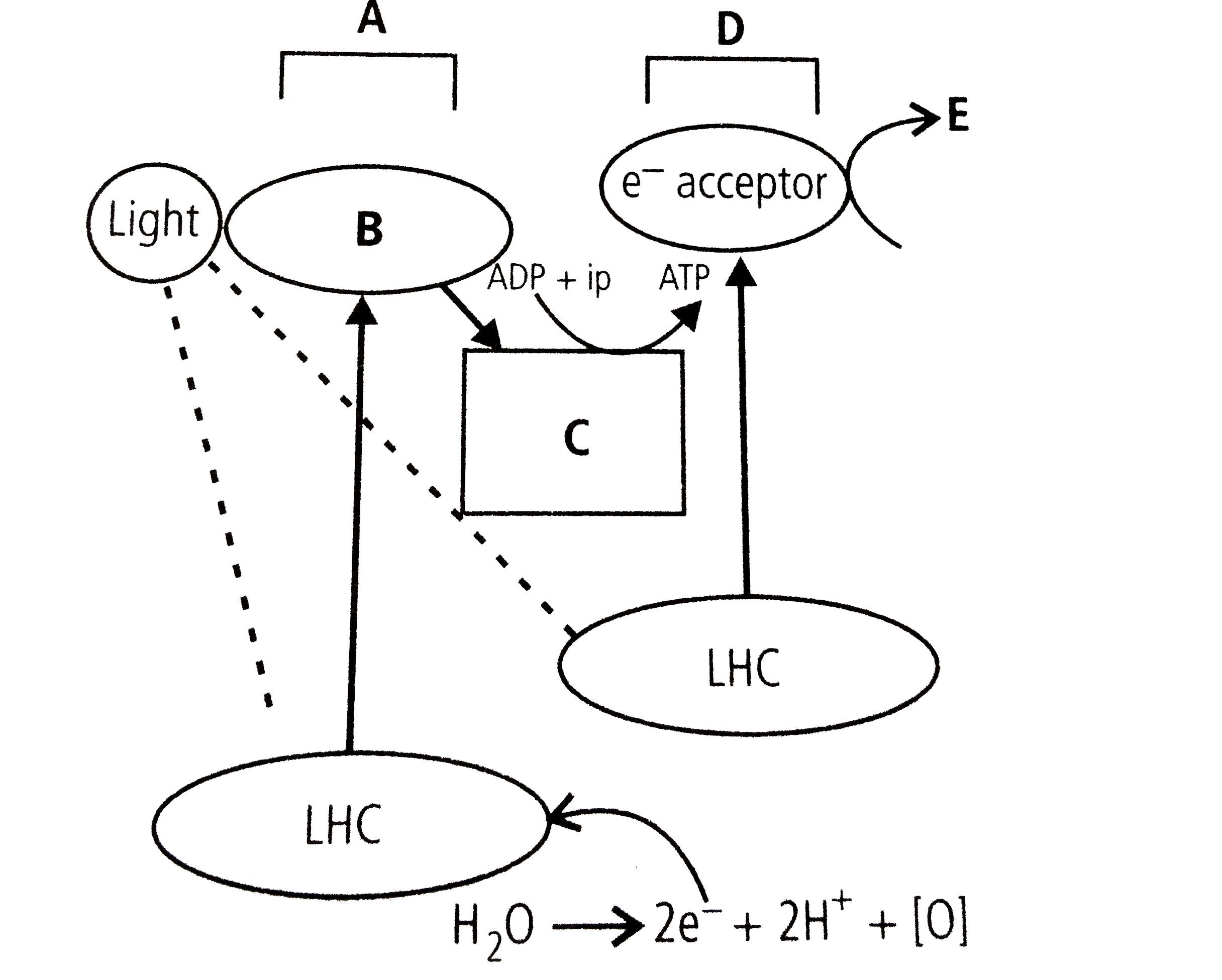Draw a labelled diagram showing Z- Scheme of light reaction.
Step-by-Step Solution to Draw the Z-Scheme of Light Reaction
1. Start with the Basic Structure: Begin by drawing a horizontal line that represents the flow of electrons. This line will have a zigzag pattern, resembling the letter "Z".
2. Draw Photosystem II (PSII): At the left side of the "Z", draw a circle labeled "Photosystem II (PSII)". Inside the circle, include a label for "P680" which is the chlorophyll molecule at the reaction center of PSII.
3. Indicate Light Absorption: Draw arrows pointing towards PSII to indicate the absorption of light energy. You can label this arrow as "Light Energy".
4. Photolysis of Water: Next to PSII, draw a water molecule (H2O) and indicate its splitting into two protons (H+), two electrons (e-), and half an oxygen molecule (O2). Label this process as "Photolysis of Water".
5. Electron Transfer to Plastoquinone: Draw an arrow from PSII to a box labeled "Plastoquinone (PQ)". Indicate that electrons are transferred from PSII to PQ.
6. Cytochrome b6f Complex: From PQ, draw an arrow to another box labeled "Cytochrome b6f Complex". Indicate that PQ is converted to PQH2 and that electrons are transferred to this complex.
7. Proton Gradient Creation: Next to the Cytochrome b6f Complex, draw arrows indicating the release of protons (H+) into the thylakoid lumen. Label this as "Proton Gradient".
8. ATP Synthase: Draw a box labeled "ATP Synthase" connected to the thylakoid lumen. Indicate that the proton gradient drives ATP synthesis.
9. Photosystem I (PSI): Now, draw the right side of the "Z" and add another circle labeled "Photosystem I (PSI)". Inside this circle, label it as "P700".
10. Electron Transfer to Ferredoxin: Draw an arrow from PSI to a box labeled "Ferredoxin". Indicate that electrons from PSI are transferred to Ferredoxin.
11. NADP+ Reduction: Finally, draw an arrow from Ferredoxin to a box labeled "NADP+ Reductase". Indicate that this process leads to the formation of NADPH.
12. Label the Final Products: At the bottom of the diagram, label the products of the light reaction: "ATP" and "NADPH".
Final Diagram
Your final diagram should have a clear "Z" shape with all the components labeled, showing the flow of electrons and the associated processes.
---
Your final diagram should have a clear "Z" shape with all the components labeled, showing the flow of electrons and the associated processes.
Topper's Solved these Questions
- SELF ASSESSMENT PAPER 4BOOK - ICSECHAPTER - SELF ASSESSMENT PAPER 4EXERCISE - Part - II SECTION - B (Answer all questions)
11 Videos
- SELF ASSESSMENT PAPER -2BOOK - ICSECHAPTER - SELF ASSESSMENT PAPER -2EXERCISE - PART II (SECTION C )
6 Videos
- SELF ASSESSMENT PAPER 5BOOK - ICSECHAPTER - SELF ASSESSMENT PAPER 5EXERCISE - Part - II SECTION - C (Answer all questions)
7 Videos
Similar Questions
Knowledge Check
Identify A,B,C,D and E in the given flow chart showing Z-Scheme of light reaction.
 AABCDEP700H+acceptore−acceptorP680NADP+BABCDEPhotosystem Ie−acceptore−transportphotosystem IINADPHCABCDEPhotosystem IIH+acceptore−acceptorP700NADPHDABCDEPhotosystem IIe−acceptore(−)transport systemPhotosystem INADPH
AABCDEP700H+acceptore−acceptorP680NADP+BABCDEPhotosystem Ie−acceptore−transportphotosystem IINADPHCABCDEPhotosystem IIH+acceptore−acceptorP700NADPHDABCDEPhotosystem IIe−acceptore(−)transport systemPhotosystem INADPH
Draw a labelled diagram of a neuron
View SolutionDraw a labelled diagram of a neuron.
View SolutionDraw a labelled diagram of synapse.
View SolutionDraw a labelled diagram of human heart.
View SolutionA ball is hanging by string from the ceiling of the roof. Draw a neat labelled diagram showing the forces acting on the ball and the string.
View SolutionDraw a labelled diagram of a nephron.
View SolutionDraw a labelled diagram of complete flower.
View Solution
